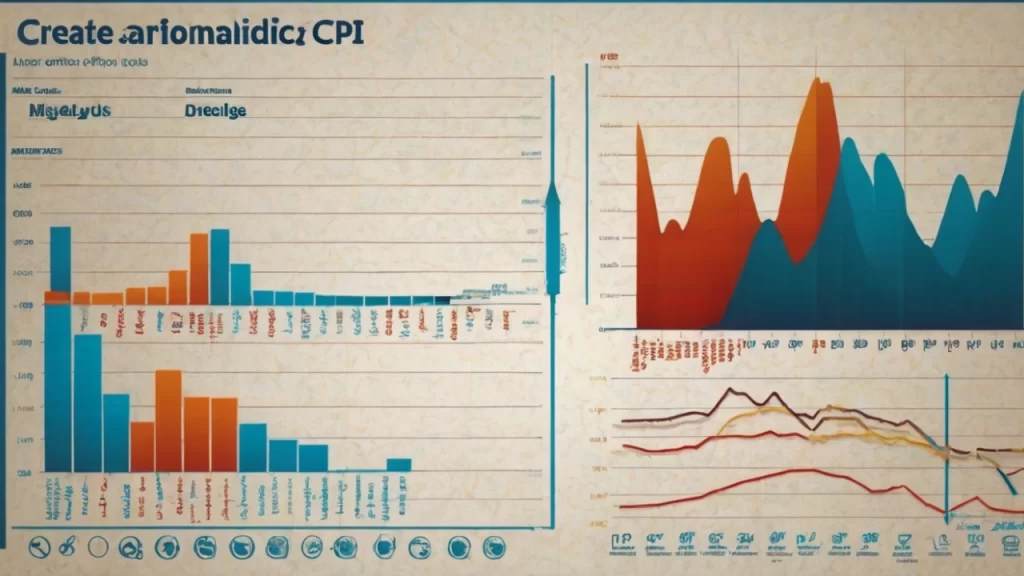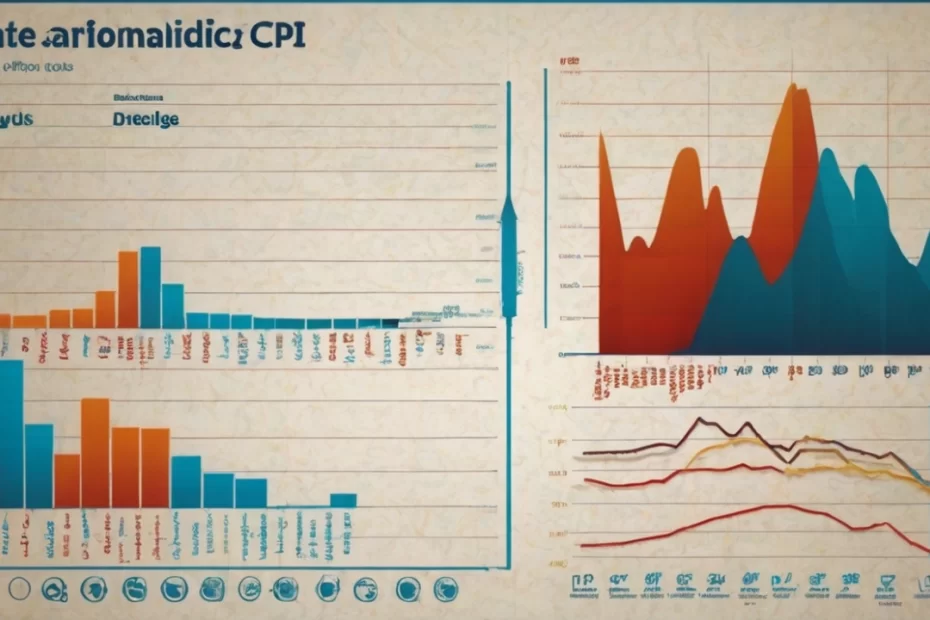Tracking the Consumer Price Index (CPI) by month offers valuable insights into inflation trends and economic shifts. Understanding monthly CPI changes can help individuals and businesses make informed financial decisions. By monitoring these fluctuations, I can gauge how prices are rising or falling across different sectors, impacting budgeting and spending strategies.
The CPI is released monthly, providing a snapshot of inflation’s trajectory. Each report reflects changes in the price of a basket of goods and services, which directly influences how I assess purchasing power and market conditions. This data allows me to understand not just current economic health but also potential future trends.
As I explore the CPI data month by month, I aim to highlight significant patterns and implications. Keeping a close eye on these numbers equips me with the knowledge necessary to anticipate market movements and make strategic financial choices.
Understanding CPI and Its Significance
I will explain the Consumer Price Index (CPI), discussing its definition, calculation methods, and how to interpret its variations. Each of these areas plays a crucial role in understanding economic trends.
Definition and Role of CPI

The Consumer Price Index (CPI) measures the average change over time in the prices paid by urban consumers for a market basket of consumer goods and services. This index includes various categories such as food, housing, apparel, and transportation.
CPI is significant as it serves multiple purposes. It is a critical indicator of inflation, impacting economic policy and individual purchasing power. Governments and central banks often rely on CPI data to make informed decisions regarding interest rates and fiscal policies.
Calculation Methodologies
CPI is calculated using a fixed basket of goods and services, with weights assigned based on consumer spending habits. The Bureau of Labor Statistics (BLS) typically conducts regular surveys to determine the composition of this basket.
The formula for CPI can be summarized as:
[ \text{CPI} = \frac{\text{Cost of market basket at current prices}}{\text{Cost of market basket at base year prices}} \times 100 ]
By changing the basket and applying various methodologies, CPI can reflect changes in consumer behavior and market conditions. Adjustments are also made to account for seasonal variations, ensuring more accurate monthly comparisons.
Interpreting CPI Variations
I find that CPI variations provide insights into economic trends. A rising CPI indicates increased prices, suggesting inflation, while a stable or falling CPI might signal deflation or stability.
Monthly CPI changes can show short-term trends, highlighting periods of rapid price increases or drops. It’s essential to look beyond just the numbers; understanding the specific categories driving change can offer deeper insights.
For instance, if housing costs rise sharply while food prices remain stable, that suggests targeted inflation pressures. By examining CPI by month, I can get a clearer picture of economic conditions and make more informed financial decisions.
Monthly CPI Analysis
In this section, I examine key elements influencing the Consumer Price Index (CPI) on a monthly basis. Understanding these factors helps clarify recent trends and variations across different regions.
Factors Influencing Monthly CPI
Several variables contribute to fluctuations in the monthly CPI. Supply chain disruptions can lead to increased prices for goods, affecting the overall index. Additionally, seasonal changes often impact specific sectors, such as food and energy, with prices typically rising during certain times of the year.
Government policies, including fiscal measures and tax changes, also play a significant role. The interplay between these factors can result in noticeable month-to-month variations in the CPI, reflecting changing economic conditions.
Recent Monthly CPI Trends
Recent data indicates fluctuations in the monthly CPI, demonstrating changing consumer behavior and economic conditions. For example, in August 2024, the CPI increased by 0.4% compared to July. This rise was driven primarily by higher energy costs, which increased the transportation index.
Moreover, core CPI, excluding volatile food and energy prices, showed a steady increase of 0.2%. Observing these trends provides insights into economic performance, guiding decision-making for consumers and policymakers alike.
Comparative CPI Data by Region
CPI values can vary significantly across different regions. For instance, as of August 2024, the Northeast region experienced an average CPI increase of 0.3%, largely due to housing costs. In contrast, the South saw a 0.5% increase, driven mainly by increases in fuel prices.
The following table summarizes the percentage changes in CPI by region for August 2024:
| Region | CPI Change (%) |
|---|---|
| Northeast | 0.3 |
| Midwest | 0.2 |
| South | 0.5 |
| West | 0.4 |
Examining these comparative data points reveals significant regional economic dynamics, which helps understand the broader implications of CPI changes.
CPI Impact on Economic Sectors
Changes in the Consumer Price Index (CPI) have significant effects across various economic sectors. I will explore how the CPI influences the auto insurance sector, consumer spending patterns, and investment strategies.
Effect on Auto Insurance Sector
The auto insurance sector experiences direct effects from fluctuations in the CPI. A rising CPI indicates increased living costs, which can lead to higher claim costs for insurers. Insurers may adjust their premiums accordingly, reflecting changes in repair costs, vehicle prices, and overall inflation.
For example, if the CPI rises due to increased automobile manufacturing costs, insurers may raise rates to cover these higher expenses. Additionally, comprehensive coverage costs may increase as the value of vehicles climb. Consequently, consumers may seek lower coverage options or increased deductible amounts to manage their budgets.
Influence on Consumer Spending
Consumer spending is closely tied to CPI trends. When the CPI rises, consumers often feel the pinch of higher prices, leading to a reassessment of spending habits. Essential purchases tend to take precedence, while discretionary spending, such as dining out or luxury items, may decline.
This shift can influence businesses across various sectors, including retail and services. For instance, during periods of high inflation, I’ve noticed that consumers may prioritize budget-friendly alternatives. Retailers might respond by adjusting their inventory to emphasize more affordable products and promotions.
CPI and Investment Strategies
Investors also monitor CPI as a key economic indicator. An increasing CPI can signify inflationary pressure, prompting me to evaluate asset allocation strategies. Investments in staples, commodities, or real estate may become more attractive during inflationary periods.
On the other hand, fixed-income assets typically lose value in high-inflation environments. As a result, I might adjust my portfolio to focus on equities that tend to outperform during inflationary cycles. Keeping a close eye on CPI changes allows for informed real-time adjustments to my investment strategy, optimizing returns amid shifting economic dynamics.
Utilizing CPI in Financial Decision Making
Incorporating the Consumer Price Index (CPI) into financial decision-making is essential for understanding economic trends, budgeting, and creating effective policies. I focus on how CPI serves as an economic indicator, guides budget adjustments, and informs policy considerations.
CPI as an Economic Indicator
CPI provides valuable insights into inflation levels and purchasing power. By tracking changes in CPI, I can gauge the economy’s health. For instance, if the CPI rises steadily, it indicates inflation is occurring, affecting my investment strategies and spending habits.
Additionally, I use CPI data to compare economic conditions across different periods. This analysis helps me identify trends and adjust my financial plans accordingly. Understanding the nuances of CPI enables me to make informed choices that align with economic forecasts.
Budgeting and CPI Adjustments
When budgeting, I consider CPI to adjust expenses accurately. If CPI indicates rising costs, I may need to increase my budget allocation for necessities such as housing and food. This ensures my financial plan remains realistic and sustainable.
I also use CPI to adjust income expectations, particularly in salary negotiations or consulting contracts. By understanding inflation, I can advocate for appropriate raises based on the current CPI trends. This proactive approach helps me maintain my purchasing power over time.
Policy Making and CPI Considerations
For policymakers, CPI plays a critical role in crafting economic policies. By analyzing CPI trends, I can recommend adjustments to interest rates or social welfare programs. This ensures that policies align with current economic conditions.
I also consider CPI when evaluating potential impacts on different demographics. It’s important to recognize how inflation affects lower-income households differently than higher-income groups. Tailoring policies based on this information promotes equity and welfare.
